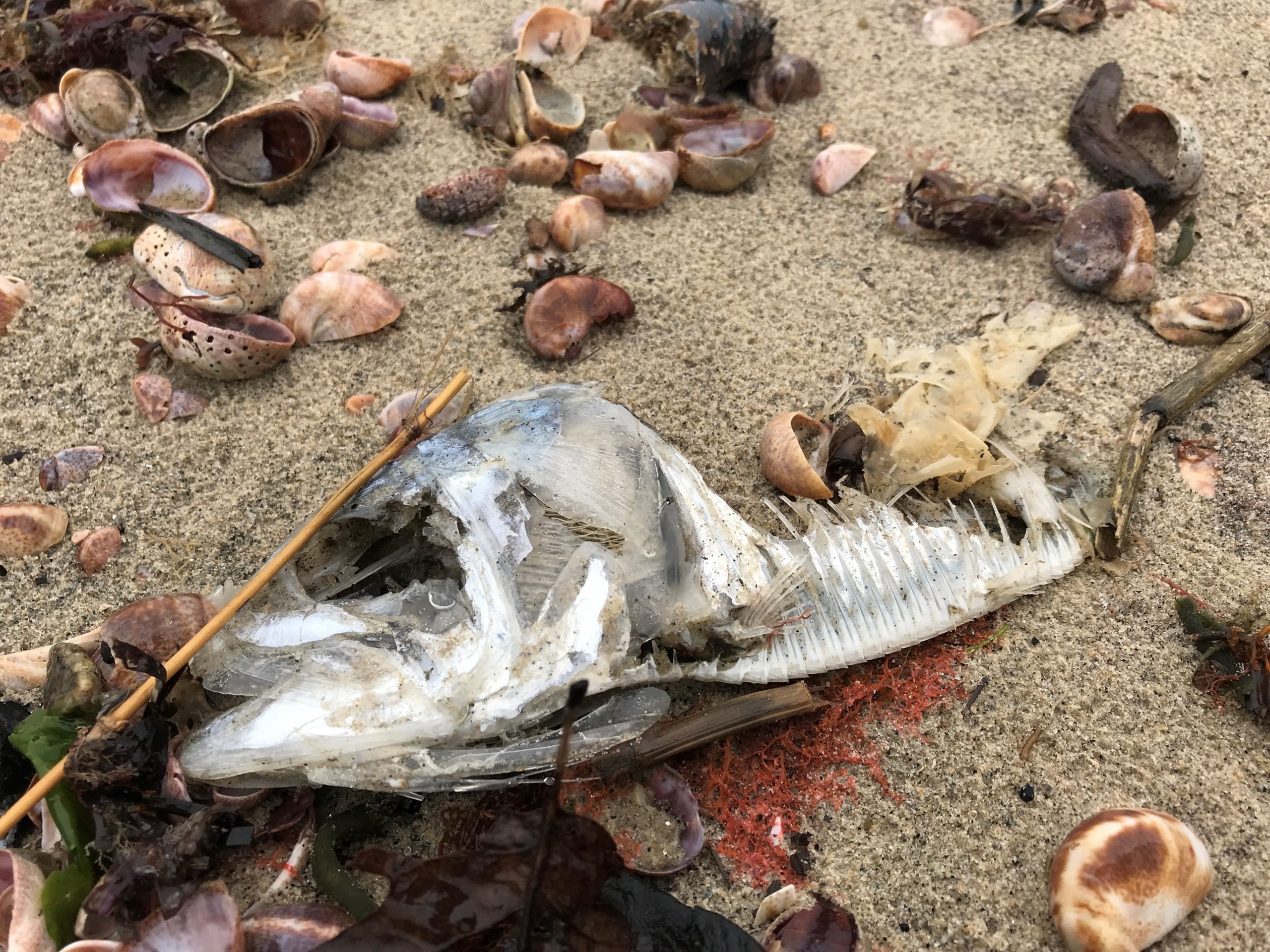
It happens regularly in late fall and early winter when large schools of bunker (pogies, menhaden, etc.) linger late into the season in large numbers: dead fish wash up on the shores and people lose their collective minds. The reasons for their late exit can often be linked to environmental factors, and with this year’s mild ocean temperatures running later than normal, the fish likely found conditions sufficient to support the delayed exit. In past years I have even seen them stay in some coastal Connecticut tidal creeks well into February and beyond.
A recent Facebook group in my home town started a discussion as we are currently seeing high numbers of dead bunker along both the oceanfront beaches as well as almost all of the small tidal creeks. Speculation as to the reason for all the dead fish washing up on our shores ran the gamut from wild guesses to conspiracy theories to even one or two who actually knew what they were talking about. I am sure that more than a few of those concerned citizens contacted the authorities as the Connecticut Department of Energy and Environmental Protection (DEEP) issued the below press release on December 11, 2020.
Menhaden Fish Kills Reported Along Connecticut Shoreline, DEEP Believes Due to Naturally Occurring Factors
In the past month, DEEP Fisheries Division staff have received and investigated numerous calls of reported sightings of dead fish along the Connecticut shoreline, from Darien to New London, and numerous points in between. These incidents, known as fish kills, involve a species of fish called Atlantic Menhaden, also known as “bunker.”
Menhaden are the most abundant marine fish species on the east coast, and fish kills involving them are not uncommon. Menhaden fish kills can occur for a variety of reasons, most often due to natural or environmental factors such as school-induced hypoxia (lack of oxygen) or cold water temperature.
While DEEP continues to investigate these events, staff believe the cause of the fish kills observed over the past month have been due to more Menhaden overwintering in the Sound this year, possibly due to a missed migration cue, leading them to succumb to the cold water temperatures and a lack of nourishment.
While this story above relates directly to a Connecticut example, it is common most everywhere that bunker can be found in large numbers. Out on Long Island thousands if not hundreds of thousands of bunker have died in the Shinnecock Canal in past die-offs, and the Providence River often sees similar occurrences in the same timeframe as we are seeing them right now in Connecticut.
In the past we have also seen rather regular die-offs in the deep of winter with small holdover schoolie striped bass, and back in 2014 I documented one such occurrence where thousands of striped bass were found dead along the shoreline in central Connecticut. This die-off was credited to what is known as cold shock. According to Donaldson, M. R., Cooke, S. J., Patterson, D. A. and Macdonald, J. S. (2008), Cold shock and fish. Journal of Fish Biology, 73: 1491–1530. doi: 10.1111/j.1095-8649.2008.02061.x, “Rapid decreases in water temperature may result in a number of physiological, behavioral and fitness consequences for fishes termed ‘cold shock’. Cold-shock stress occurs when a fish has been acclimated to a specific water temperature or range of temperatures and is subsequently exposed to a rapid decrease in temperature, resulting in a cascade of physiological and behavioral responses and, in some cases, death. Rapid temperature decreases may occur from either natural (e.g. thermocline temperature variation, seiches and storm events) or anthropogenic sources (e.g. varied thermal effluents from power generation and production industries). The magnitude, duration and frequency of the temperature change as well as the initial acclimation temperatures of individuals can influence the extent of the consequences of cold shock on fishes.”
As noted back in 2014, and in subsequent die-offs since,, we always urge you to contact us here at The Fisherman if you encounter any examples so that we may investigate further and make sure nothing sinister is at fault.

